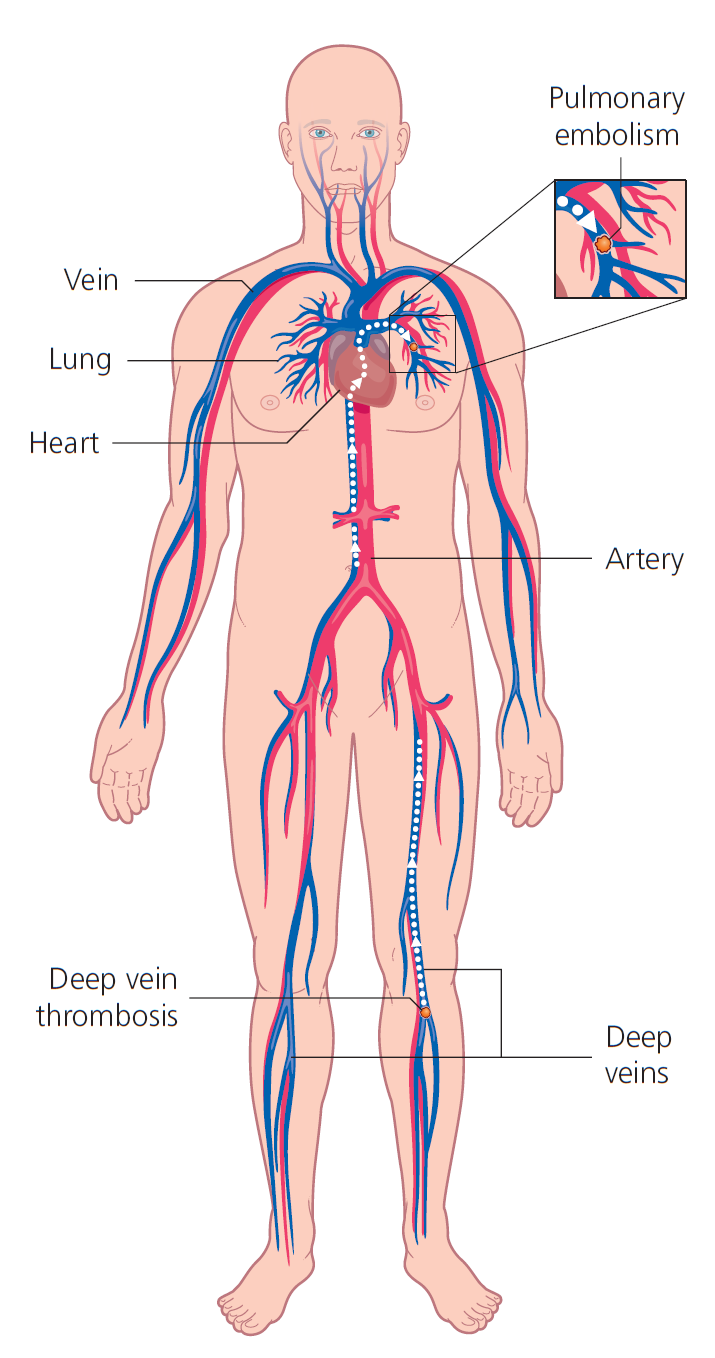The related blood clot problems—deep vein thrombosis (DVT) and pulmonary embolism (PE)—are known as ‘venous thromboembolism’ (VTE for short) [1,5] and VTE is a significant cause of death in Australia and New Zealand.[2,4]
DVT refers to a blood clot that forms in one of the deep veins, most commonly in the leg.[1] A DVT can occur in any limb but tends to occur more commonly in the leg, involving the foot, ankle, calf or whole leg.[1] A clot may block or reduce blood flow through these veins, which carry blood from the lower body back to the heart. The blockage can be painful and cause swelling and redness in the affected leg. [1] Blood clots can also form in veins close to the surface of the skin and cause a superficial thrombophlebitis(superficial VTE). [3]
A complication of DVT that can result in serious illness occurs when a clot breaks loose, or ‘embolises’, and travels through the bloodstream, causing blockage of blood vessels in the lung (pulmonary arteries), known as PE. [1,3] If this happens, it may cause difficulty in breathing, chest pain, and blood-stained phlegm and could be fatal. [1,3]
